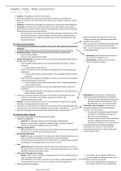Class notes
Final Notes - Microeconomics
- Course
- Principles Of Microeconomics
- Institution
- University Of Western Ontario (UWO )
In depth notes for every week of first year Microeconomics. Used these notes in my first year to get a 90+. completely cumulative of the entire course. Covers all basic Microeconomics topics
[Show more]



